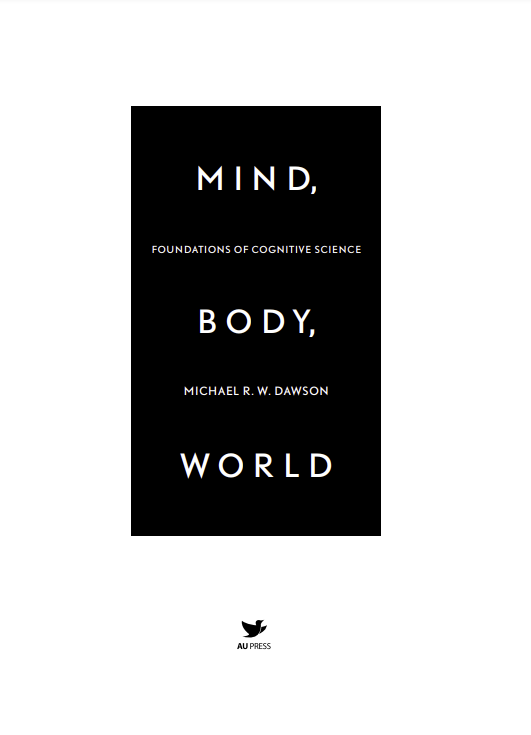Mind, Body, World
Editorial: AU Press
Licencia: Creative Commons (by-nc-nd)
Autor(es): Dawson Michael
Understanding Cognitive Science (Dawson, 1998) was an attempt to present a particular thread, Marr’s (1982) tri-level hypothesis, as a unifying theme for cognitive science. At that time, the 1990s, the primary texts available for survey courses in cognitive science (Gleitman & Liberman, 1995; Green, 1996; Kosslyn & Osherson, 1995; Osherson, 1995; Posner, 1991; Smith & Osherson, 1995; Stillings, 1995) were surveys of research in the many different content areas of cognitive science. A typical text would consist of chapters reflecting different research areas (e.g., concepts and categorization, mental imagery, deductive reasoning), each chapter written by a different specialist. Such texts provided a solid technical introduction to cognitive science and clearly indicated its interdisciplinary nature; over the years, I have used several of these texts in my own courses. However, these works did not successfully provide a “big picture” view of the discipline. Why was it so interdisciplinary? How was it possible for researchers from different disciplines to communicate with one another?
The purpose of the current book is to continue the search for unification in cognitive science that was begun with Understanding Cognitive Science (Dawson, 1998). This search for unification is made more difficult by the advent of embodied cognitive science; a school of thought that may also be composed of fragmentary trends (Shapiro, 2011). Because of this challenge, unification is pursued in the current work in a more informed and constrained manner than in Understanding Cognitive Science. Emphasis is placed on introducing the key ideas that serve as the foundations for each school of thought in cognitive science. An attempt is made to consider whether differences amongst these key ideas can be used to inform conceptions of the cognitive architecture. The hypothesis that I consider in the current book is that the notion of architecture in cognitive science is currently pre-paradigmatic (Kuhn, 1970). One possibility to consider is that this notion can be made paradigmatic by considering a theory of architecture that pays heed to the core ideas of each of the cognitive sciences.
[Edmonton: 2013]
Compartir:
Una vez que el usuario haya visto al menos un documento, este fragmento será visible.


